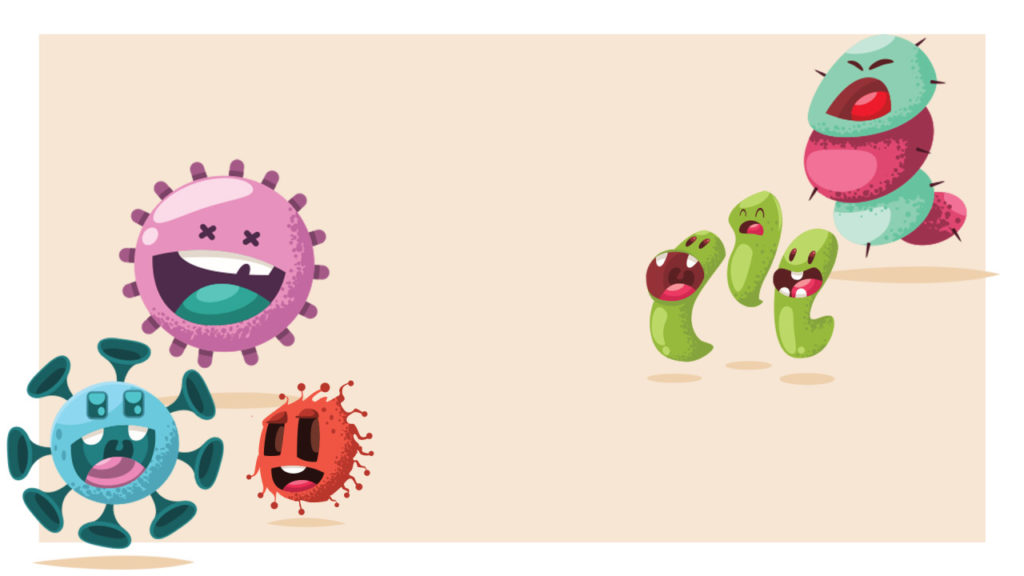Teach kids to keep germs at bay by adopting the following habits:
Wash your hands.
Proper hygiene is one of the most effective ways to prevent the spread of germs. Encourage your kids to wash their hands frequently with warm water and soap, especially after using the bathroom, before eating, and any time they use shared school supplies or equipment. Consider packing antibacterial hand sanitizer in their lunch bag or backpack
for extra protection.
Avoid touching eyes, nose, and mouth.
Even the most scrupulous hand-washers can’t keep their hands and fingers clean all the time. Touching the eyes, nose, or mouth introduces germs to the mucus membranes, where they can spread like wildfire.
Don’t sneeze or cough into your hands.
Covering your mouth with your hands when coughing or sneezing might prevent germs from getting into the air, but the next time your child touches something, they’ll spread quickly. Instruct them to sneeze or cough into the crook of their elbow instead.


Get a flu shot.
The CDC reports that millions of children catch the flu every year; the virus can spread quickly, affecting the entire family. Serious complications can occur, some of which could be life-threatening. Your best preventive tool is a seasonal flu shot. A few seconds of discomfort is better than a week’s worth of misery. Make sure your child is current on all immunizations, too.
Get a good night’s sleep.
Sleep boosts the immune system, providing protection from germs and infection. It’s recommended that school-aged children get a minimum of 10 hours of sleep every night, so establish a consistent bedtime and remove distractions such as phones, tablets, and video games.
Stay home when you’re sick.
Keep your child home from school if they have a fever, pink eye, or other contagious illness; are taking antibiotics; or don’t feel well enough to focus on lesson plans or participate in classroom activities. Talk to their pediatrician for a timeline on when to send them back to school.
There’s no way to completely avoid germs, but practicing these strategies should help reduce the number of colds your kids suffer through this school year.
WORDS MARK PETRUSKA

